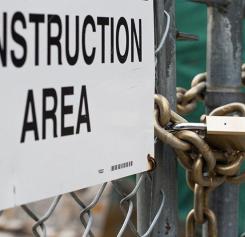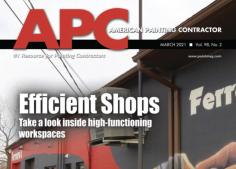
COVID-19 variant creates labor shortage in the construction industry
The Delta variant of COVID-19 is getting the blame for a slowdown in construction growth just at the time when the industry was set to boom back forward. This may result in continued issues with product procurement, materials prices, and transportation well into next year.
A report on Construction Dive noted a 5% downturn public construction on a year-over-year basis, and a 4% decrease in nonresidential construction. The article advises contractors to work a contingency into their contracts to account for any sudden materials price hikes. As paint contractors are often the final visitors of these sites, this will impact the paint industry as well.
“Higher materials prices and worsening skills shortages represent primary culprits,” said Associated Builders and Contractors Chief Economist Anirban Basu in a press release. “Many project owners are delaying projects due to elevated construction service delivery costs. With COVID-19 continuing to wreak havoc on supply chains, materials prices and transportation costs are set to remain elevated well into 2022. The result is that the construction recovery is significantly slower than it would otherwise be.”
Construction workers are at greater risk
In Texas, which already takes the heat for a lot of product shortages due to its exceptionally cold winter, contractors have reported that many construction industry workers are sick with the Delta variant.
According to an article in Texas Monthly, San Antonio’s Zachry Construction said that it had put safety protocols in place and that things seemed to be getting back to normal until the Delta variant blew into town. Other Texas companies agree that the labor shortage due to illness, along with the supply chain interruptions, has significantly impacted their bottom line.
Construction jobs in Texas rose to almost 750,000 by March, but have since declined by approximately 25,000, now lower than it was in December of last year. While the supply chain problem plays a role, a lot of this is due to unvaccinated workers getting sick, with a larger percentage of construction workers than in many other industries choosing to remain unvaccinated. Because many construction workers are in close proximity on the job, and also hail from more highly affected minority groups, the chance of an unvaccinated worker getting sick is higher than in many other industries. Many workers reported they felt young and healthy and therefore wouldn’t need to be protected against the variant.
Zachry has encouraged vaccinations, but not required them.




Add new comment